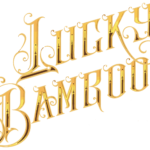The tattoo machine has a long and complicated past, dating back to the 1800s. It all began with Thomas Edison, an American inventor and his rotary type device. He invented it back in 1876 and its main purpose was to create stencils to be used on flyers. Today’s tattoo machines have come a long way from the designs of old. The very first machine was adapted from Edison’s rotary operated stencil pen which while revolutionary, was heavy and cumbersome to use. What began as an electric motor secured on top of a tube with a steel needle, transformed into a more efficient model after the addition of two electromagnetic coils, springs and contact bars. Five years later this design was improved by Charles Wagner who created a model that featured twin coils set side by side.
Today most modern tattoo machines are adjustable in terms of speed, depth and force of application. The Bishop Rotary tattoo machine was created in 2009 and tattoo artists everywhere welcomed its lightweight design that allowed them to use it for longer without experiencing wrist pain. The very first tattoo machines were made from iron, steel and brass while the later models are often crafted from aluminum, favored for its lightweight properties and durability. The original machines were rotary systems while the latest designs use electromagnets to function.
Today, tattoo machines boast innovative and original features such as the Cheyenne Hawk tattoo machine that uses a revolutionary cartridge needle system that allows you to change the needle at the flick of the wrist. The tattoo machine has a rich and varied history and it is fair to say that even the most modern of machines have been inspired by the very first tattoo machines.
